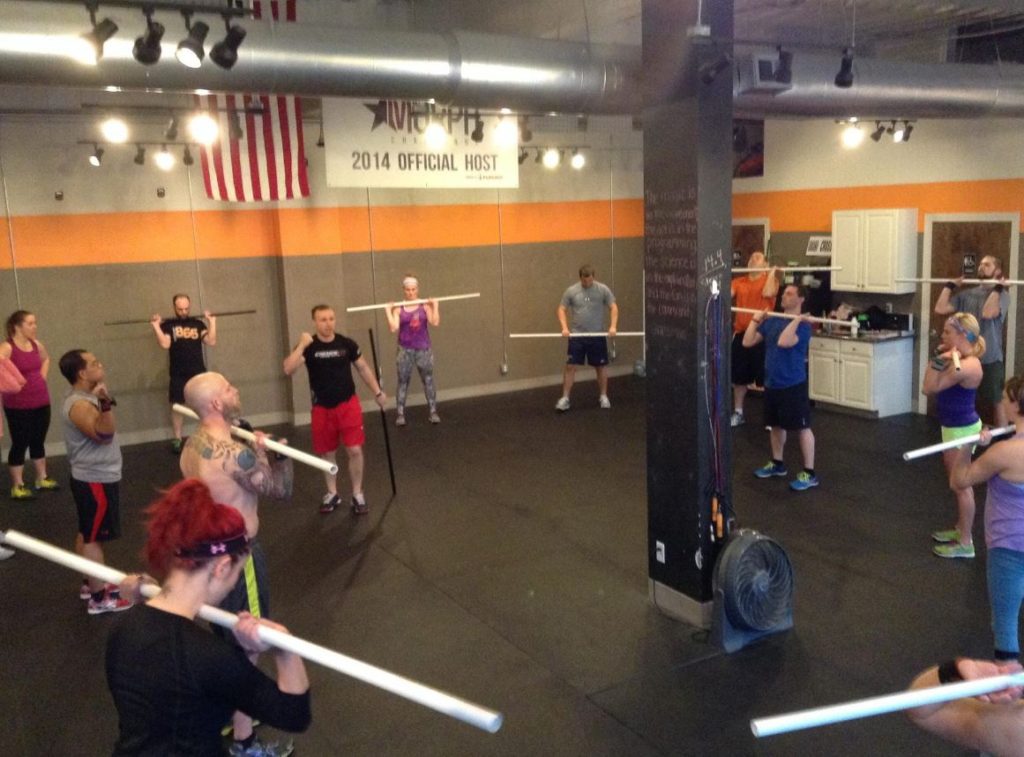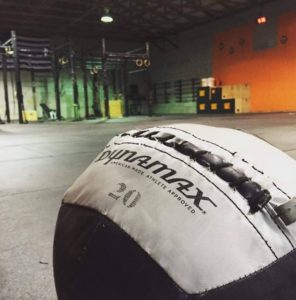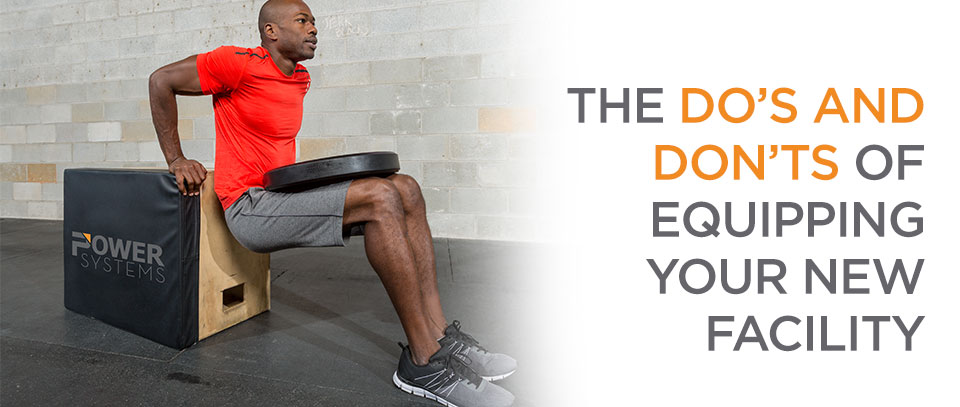Owning your own gym is a pipe dream of many trainers – I’m one of the lucky ones living the dream.
For the past three years, I’ve co-owned and managed a training studio. We’ve grown from a closet-sized location to a large warehouse space packed with dedicated members. While that doesn’t make me a fitness “expert” in any way, I have learned a few things along the way. So you’ve got the dream, the passion, the business plan, and the lease – now what equipment do you need to open your group training gym?
Before you start filling your online shopping cart, I’d suggest you step back and ask yourself 3 important questions in regard to the population/demographic you want to serve and the programming you want to offer.
1. What is the population/demographic you would like to serve?
 When thinking about population consider how many people you can realistically and safely service within your space. Also, do you plan on capping your classes or will you leave it open? Both of these are important to consider and determine whether you’ll need more or less equipment.
When thinking about population consider how many people you can realistically and safely service within your space. Also, do you plan on capping your classes or will you leave it open? Both of these are important to consider and determine whether you’ll need more or less equipment.
When it comes to demographics I am referring to males vs. females, younger vs. older, general exerciser vs. serious athlete. Pin pointing these exact demographics can be difficult if you are just starting out. You can probably assume an even split for gender, but identifying the needs of the members you are serving will allow you to decide on types, quantities, and variety of equipment needed to service them. For example, for if you’re servicing athletes you’ll probably want to consider sleds and plyometric equipment, while you can probably go with basic strength training equipment for the generalist.
2.What programs do you plan to offer?
At our gym we wanted to offer group boot camps/cross training workouts. Every workout consists of a group warm up, stretching and mobility; skill work, the workout, and individual cool down. Boot Camps will continue to be our primary program, but over time (and gradually) we’ve added Weight Lifting, and our endurance program, ShRED. Each of these classes has different focuses, but at the same time they also share many of the same equipment needs.
3.What type of support programs would you like to offer?
You’re only as good as your foundation and the support it provides. We knew that we needed to support our programs by offering individual attention in a one on one setting (we call this program Elevate), Yoga/Mobility classes to prevent injury and promote better movement, and bi-monthly workshops to keep our members engaged. These support programs may require equipment outside of our daily needs, yet are still very important.
Now that you’ve considered these 3 questions, what does that actually look like for your shopping list? Here are 5 tips and things to consider:
1.) Equipment Quantity: I’d like to caution any first-time gym owner from thinking you must open from day one with all the equipment you’ll ever need. Your concern should be nurturing your growing member base, not how to scrape enough money together to pay for your equipment debt. So start with the basics and add more over time and don’t forget you can use programming schemes to work with the equipment you have. For example, design partner workouts where two members can share one bar, stagger where each member begins the workout, or have a section A & B.

2.) Bars and Kettlebells: Invest in good barbells. Order a few lighter weight or trainer bars so your newbies don’t feel left out by using a “fake bar.” When in doubt, purchase more “girl” (15 kg) than “guy” (20 kg) bars since you can always add more plates. Each person varies on whether they prefer bushing, needle, or ball bearing bars, but our members seem to prefer the Diamond Pro bushing bars in 15 or 20 kg. Also, refer to the barbells by their kilogram or poundage instead of gender to avoid an aversion to using a particular bar. All this applies to kettlebells, too
3.) Storage: Organization is not only appealing to the eye of current and future members, but it will maximize your floor space. Vertical bar holders, med ball storage racks, and foam roller holders will create a more professional look. Proper storage also ensures that your equipment will stay clean and in use for a long time.
4.) Plyo Boxes: We order Safe Edge Plyo Boxes. They are less intimidating for beginners while still looking authentic and provide 3 height options. Besides, nobody is really as excited about eating a box as they pretend to be.
5.) Mobility: Go with high quality foam rollers. We use Trigger Point brand. Order quality mats, period.
One last tip I’d like to give you is members will choose you for the expertise, care, and professionalism you exude. Flashy equipment isn’t everything, but it is part of the bigger picture. The right equipment helps to create the gym that you are lucky to bring from dream to reality. So choose wisely and fill that cart.

You must be logged in to post a comment.